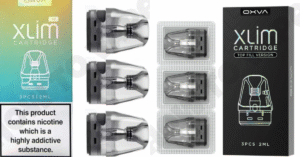
resume for students
For students in Australia entering the job market, crafting a compelling resume and cover letter can be a challenging task—especially when responding to job applications that include selection criteria. Whether applying for internships, graduate programs, or part-time work, students need to tailor their applications to demonstrate that they meet specific requirements. By focusing on how to structure a resume for students and writing a strong cover letter addressing selection criteria, applicants can significantly improve their chances of landing an interview.
Why Selection Criteria Matters in Student Applications
Many employers, particularly in government, education, and healthcare sectors, use selection criteria to assess a candidate’s suitability. These criteria outline the skills, knowledge, and attributes required for the role. Students must not only meet these criteria but also provide clear, evidence-based examples in their applications.
Understanding how to align a resume for students and cover letter with the selection criteria can set one candidate apart from another, especially when academic and work experience are limited.
Crafting a Strong Resume for Students
1. Use a Clear and Professional Format
A student resume should be concise, well-organized, and easy to read. Use clear headings such as Education, Work Experience, Skills, and Extracurricular Activities. Use bullet points to detail responsibilities and accomplishments.
2. Highlight Education First
For students, education is typically the most relevant experience. Include the name of your course, institution, and expected graduation date. Mention any academic achievements, awards, or relevant coursework.
3. Focus on Transferable Skills
Even without full-time job experience, students often have transferable skills gained through casual jobs, volunteering, or university projects. Skills like communication, teamwork, problem-solving, and time management are highly valued.
Example:
“Developed strong communication skills while leading group projects and managing a customer-facing role in retail.”
4. Include Relevant Experience
Whether it’s a part-time job, internship, or student leadership role, include experiences that align with the role you’re applying for. Describe what you did and what outcomes you achieved.
5. Use Keywords from the Job Description
Many employers use automated systems to screen resumes. Including keywords from the job ad and selection criteria improves your resume’s visibility and relevance.
Writing a Cover Letter Addressing Selection Criteria
A cover letter addressing selection criteria is often required when applying for government, not-for-profit, or graduate roles. This letter should clearly link your experiences to each criterion listed in the job advertisement.
1. Start with a Strong Introduction
Begin your letter by stating the role you’re applying for and a brief summary of your interest and qualifications.
Example:
“I am writing to apply for the Graduate Program at XYZ Health. As a final-year Bachelor of Nursing student with strong clinical placement experience, I am confident in my ability to contribute to your team.”
2. Use the STAR Method
For each selection criterion, respond with a structured example using the STAR format:
- Situation – Describe the context.
- Task – Explain the task you were responsible for.
- Action – Outline the steps you took.
- Result – Share the outcome or what you learned.
This method helps structure your response and shows evidence of your skills in action.
3. Stay Concise and Focused
Be clear and direct. Aim to address each criterion in one paragraph. Avoid vague statements—focus on real experiences and measurable outcomes.
4. Match the Tone of the Job
If the position is formal, keep your language professional. If the workplace appears more relaxed, you can adopt a slightly more conversational tone—but always remain respectful and polished.
Final Tips
- Proofread thoroughly to avoid spelling and grammar mistakes.
- Tailor each application—never send a generic resume or cover letter.
- Keep formatting consistent across both documents.
For students unsure about how to proceed, professional services like Brisbane Resume can help tailor a resume for students and craft a powerful cover letter addressing selection criteria, giving candidates a competitive edge.
Conclusion
Standing out as a student resumes applicant involves more than listing qualifications. It requires a strategic approach to writing a resume and cover letter that directly addresses what employers are looking for. By following structured tips and aligning application documents with selection criteria, students in Australia can take confident steps toward their career goals.







